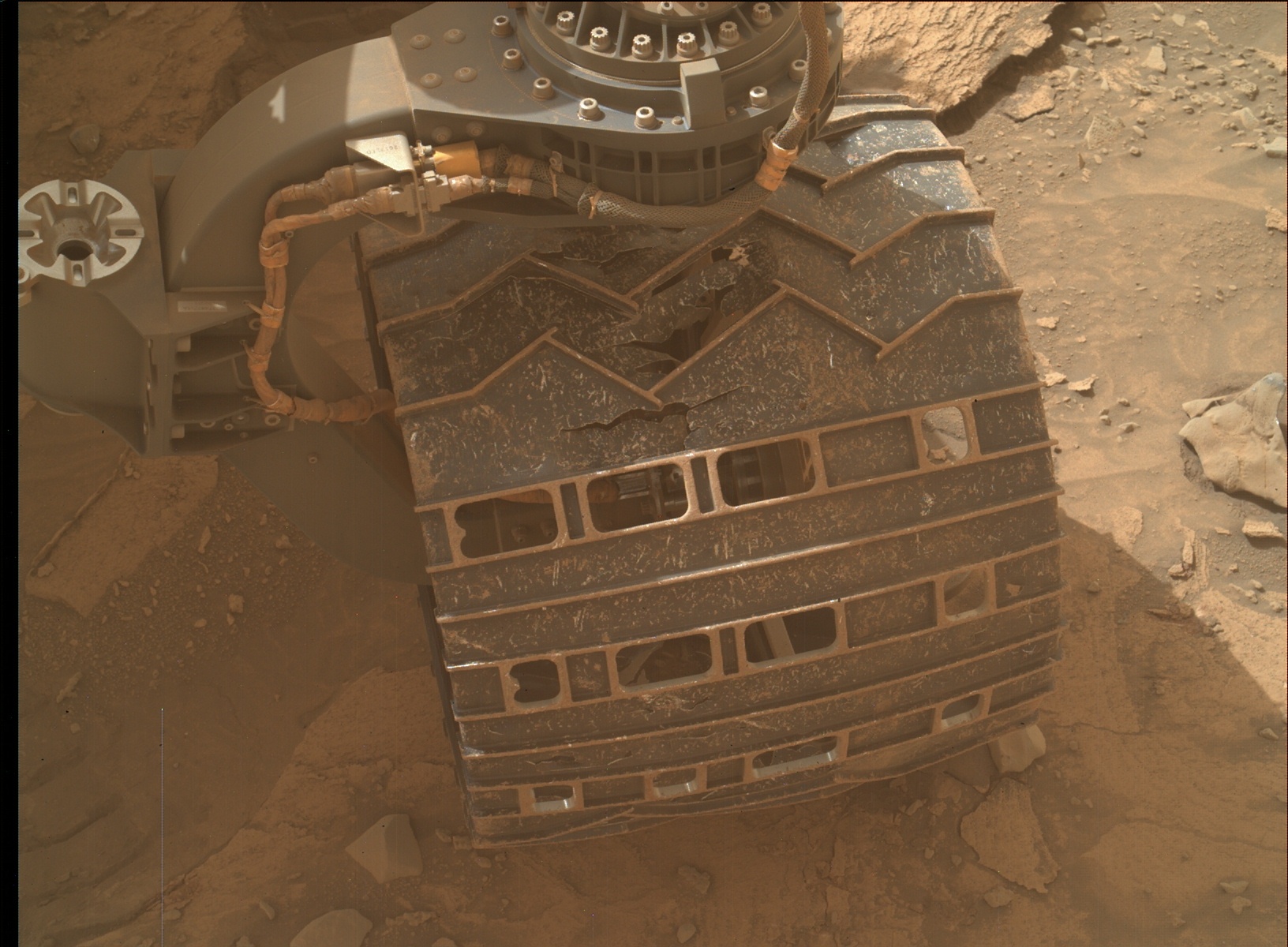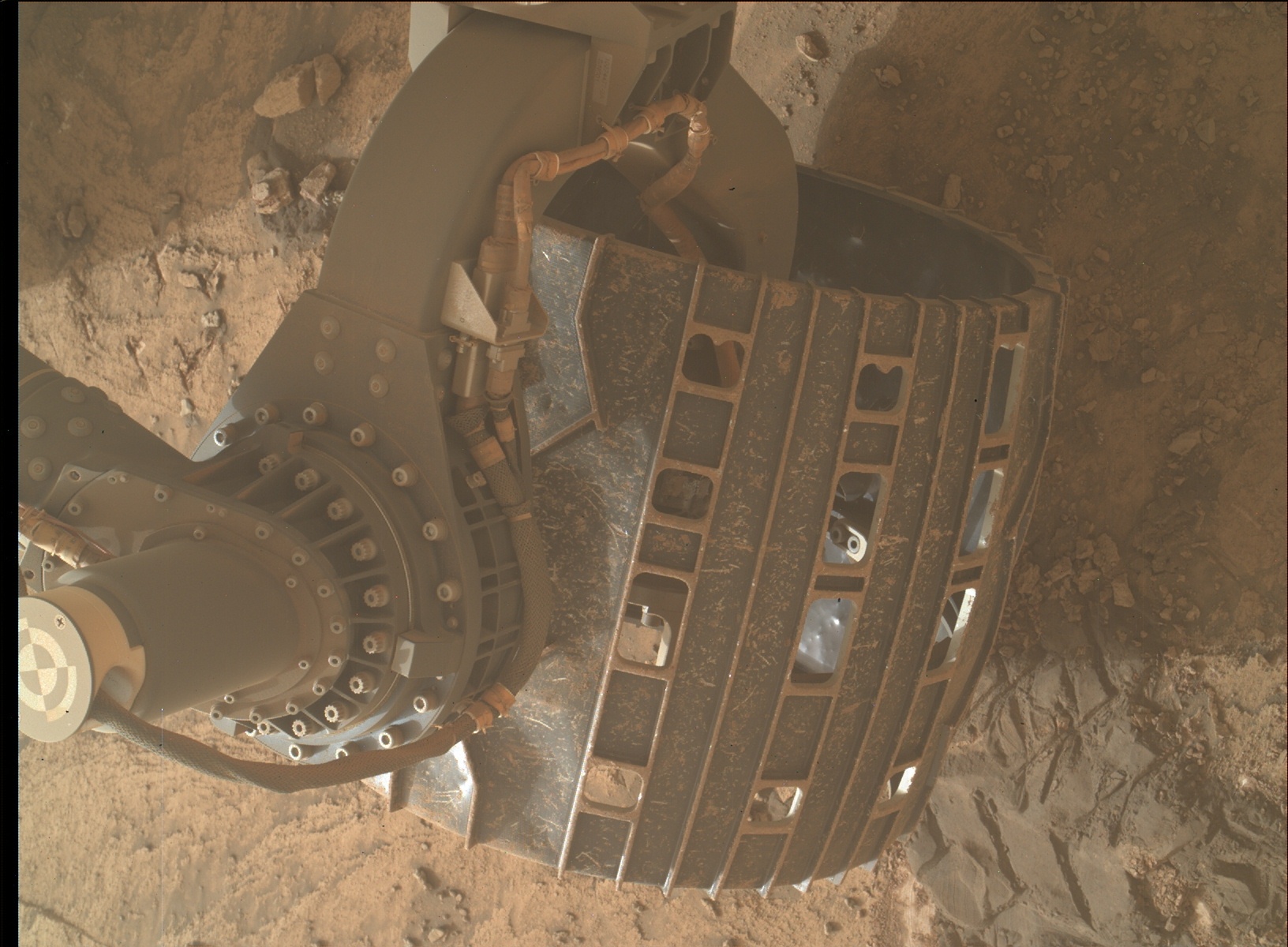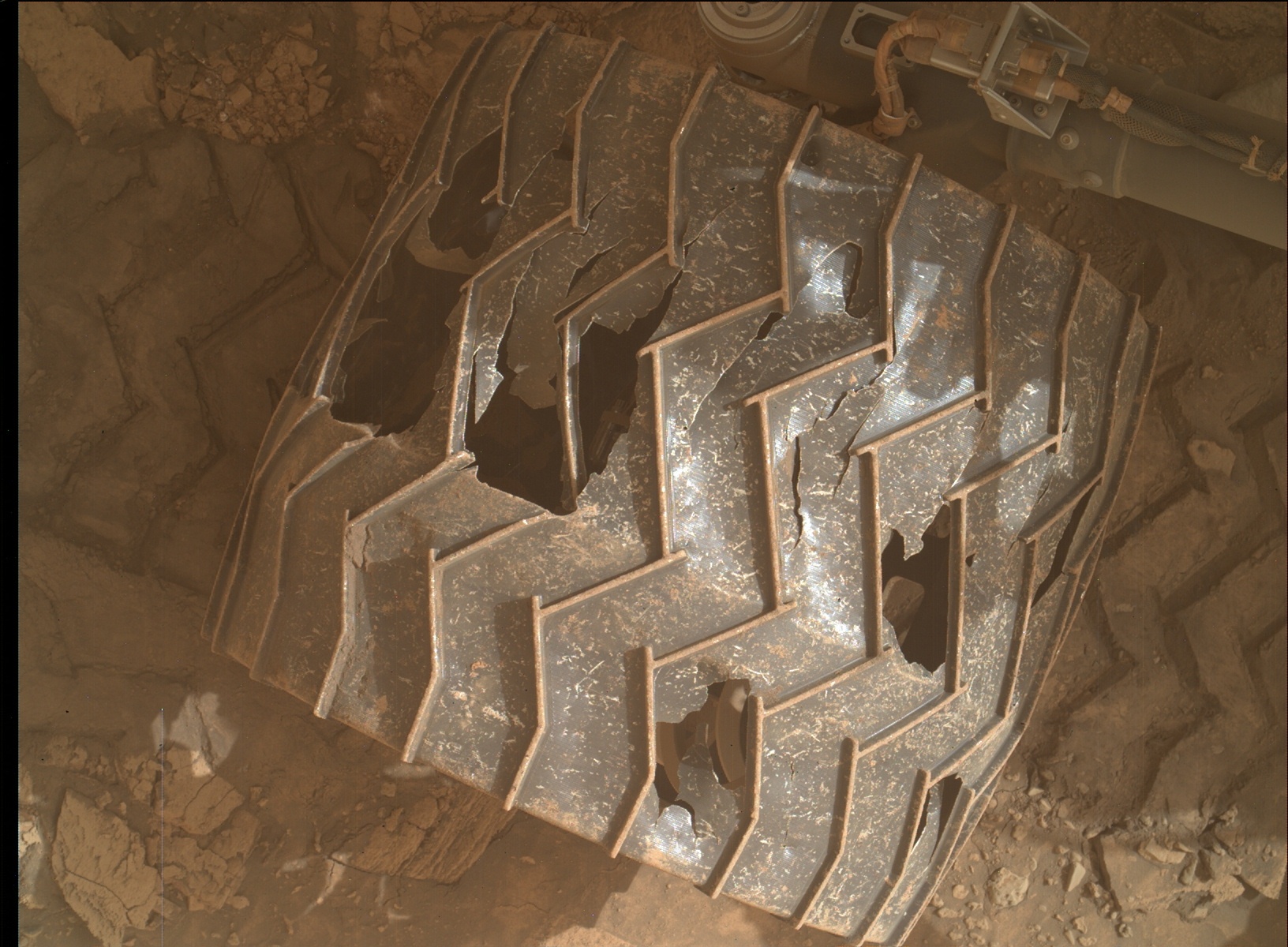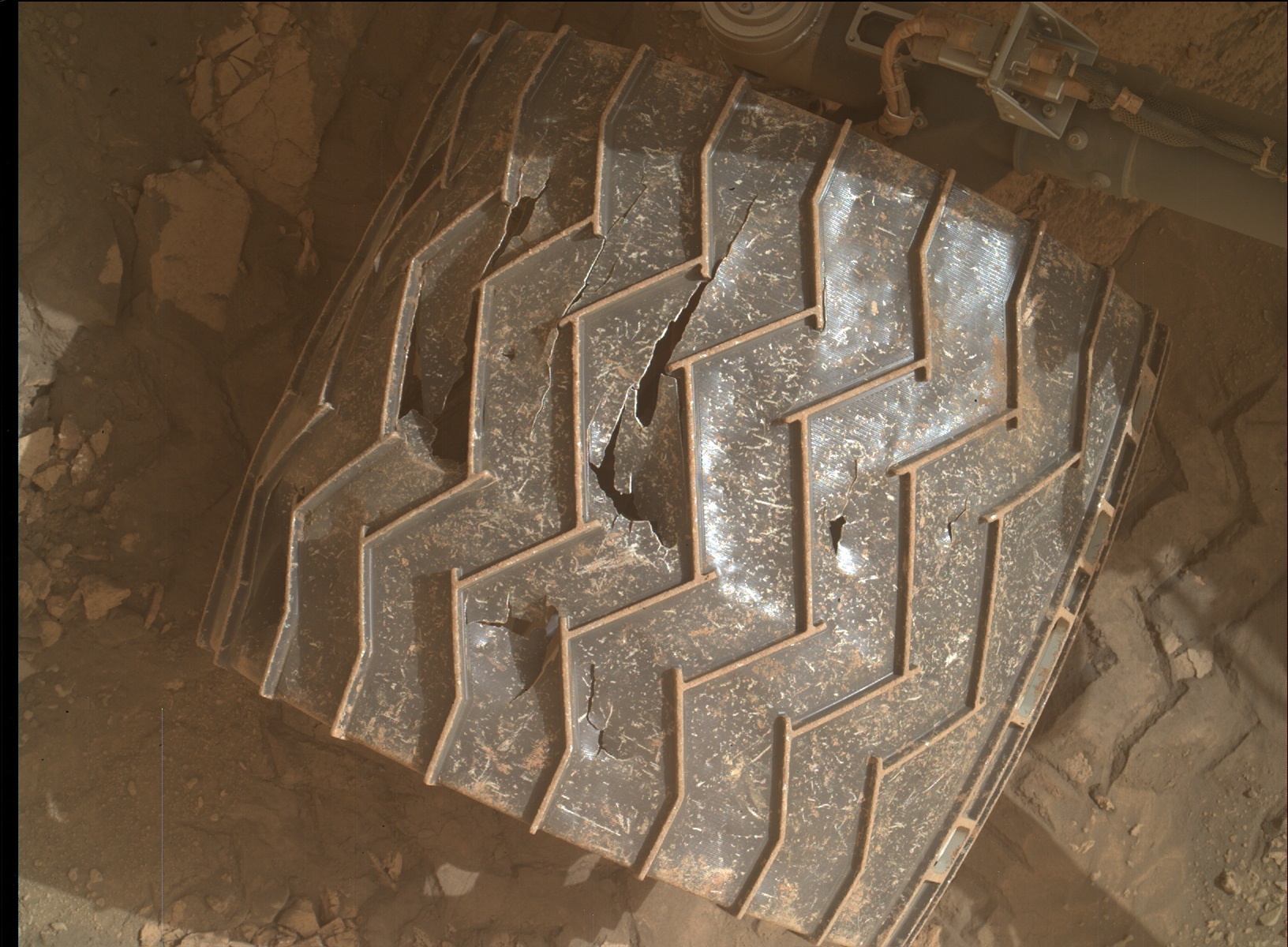Torturous Martian terrain is chewing through NASA Curiosity's tires
NASA isn't too worried though

NASA's Mars Curiosity rover has covered a lot of ground in the decade since it first touched down on Mars, and that ground hasn't exactly been paved, as new photos from NASA reveal.
The latest images were uploaded to NASA's official Curiosity mission website, and is part of a regular check-up for the rover.
"Historically, we perform wheel imaging every 500 meters," Andrew Good, a NASA Jet Propulsion Laboratory spokesperson, told TechRadar.
"We recently extended the distance allowed to every 1,000 meters since the wheel performance seems to be fairly predictable – an indication that mitigations that have been put in place, like our traction control algorithm, seem to be having their intended effect (reducing wear, extending wheel life)."




Given the rugged surface of Mars – dry, hard-packed soil, boulders, and uneven terrain – wear and tear on the rover's wheels is inevitable, our colleagues over at Space note.
NASA is confident that the rover will hold up for a while yet. "The current predicted odometry remaining is expected to be sufficient to support Curiosity throughout the remainder of the mission," Good told us.
Analysis: appearances aside, Curiosity's wheels are holding up rather well
While the holes in Curiosity's wheels might look bad, it's actually something that NASA has known about for at least five years.
Sign up for breaking news, reviews, opinion, top tech deals, and more.
"It’s by no means the first time people on social media have reacted to Curiosity’s wheels," Good told us. "They’ve looked like that for quite some time. We’ve written stories about the wheels since about 2017."
Curiosity landed on Mars on August 6, 2012 (EDT), so by 2017 the Mars Curiosity mission had been on the planet for more than twice the length of its primary mission, which was originally planned for one Martian year (about 687 Earth days). That mission has since been extended owing in large part to the resiliency of the rover itself.
Given that its wheels still have some Martian kilometers left in them at this point is genuinely remarkable.

John (He/Him) is the Components Editor here at TechRadar and he is also a programmer, gamer, activist, and Brooklyn College alum currently living in Brooklyn, NY.
Named by the CTA as a CES 2020 Media Trailblazer for his science and technology reporting, John specializes in all areas of computer science, including industry news, hardware reviews, PC gaming, as well as general science writing and the social impact of the tech industry.
You can find him online on Bluesky @johnloeffler.bsky.social